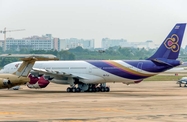Plans to develop a high-speed rail system in Thailand are gathering pace, with a series of routes being considered as part of a programme to boost passenger and freight services and better integrate the transport network with the rest of the region.
Various proposals to develop a high-speed rail system have been raised since the mid-1990s, with one of the first suggestions a line linking Bangkok to Nakhon Ratchasima in the north-east. None got past the design stage.
However, in November last year economic ministers revived the proposal, and this time it is seen as having a greater chance of leaving the station.
A feasibility study by the Office of Transport and Traffic Policy and Planning (OTTP) on four proposed routes is to be completed by August and submitted to the government. A 220-km link between Bangkok and the eastern province of Rayong is the first being considered for construction.
The three other routes that the government is studying are Bangkok to Padang Besar on the Thai-Malaysian border; Bangkok-Nong Khai in the north-east; and Bangkok-Chiang Mai. If all lines were to be built they would cover some 2000 km, adding 50% to the length of the existing rail network and allowing travel from Bangkok to any district in the country in less than five hours.
Supoj Sublom, the Ministry of Transport's permanent secretary, gave an insight on some of the recommendations to be made by the OTTP in an interview with local media in late June.
The OTTP would support a plan where the government takes sole responsibility for civil construction, including tracks, while allowing the private sector to invest in the trains, said Supoj. He added that some $24bn of state investment was needed for the construction work.
A second option would see the state and private sector invest equally in all aspects of the project, while another would see the state provide 70% of the funding with the rest coming from private partners.
Momentum for the Thai scheme was increased after China unveiled plans early this year to establish a high-speed rail network crossing Central, East and South-east Asia, and then linking to Europe.
One of the first stages of the Chinese plan would be to connect to the region, including Thailand, Malaysia, Cambodia, Vietnam and Burma, as a further step towards integrating the countries' economies.
While potentially a significant boon for the Thai economy, there are logistical and financial issues that would need to be resolved.
For instance, China uses two different gauges for its railway lines, and both are different from those used by most Asian countries, including Thailand. Agreeing on a standard width for tracks will be crucial for any budget planning, as well as construction and operation of the grid.
Funding is another issue. While Thailand is able to pay for its own high-speed network, such a big-ticket project will be difficult for some states in the region to finance, though it has been suggested China could provide them with credit in return for trade concessions.
The high-speed rail link would mark a major leap forward for Thailand's aging single-track rail system. Currently, Thailand has well over 4000 km of track, serving most of the country's main population and economic centres. The State Railway of Thailand is pushing ahead with a programme of doubling the lines in a number of key areas.
This programme was given a boost last year through the Thai Khem Khaeng infrastructure programme, a $43.4bn scheme launched in 2009 to stimulate the then flagging economy and bolster the country's medium-term economic competitiveness.
Spending of around $5.2bn was approved by the cabinet to upgrade the existing rail network, with $4.6bn to be used for track doubling and the balance for new rolling stock. With the planned upgrades, set to be completed within five years, it is expected that speeds on mainline tracks will double to around 120 km per hour.
Though nowhere near the 160 to 250 km an hour being mooted by supporters of the high-speed rail project, even this upgrade would be a significant improvement in Thailand's ability to move people and freight in a timely manner.

